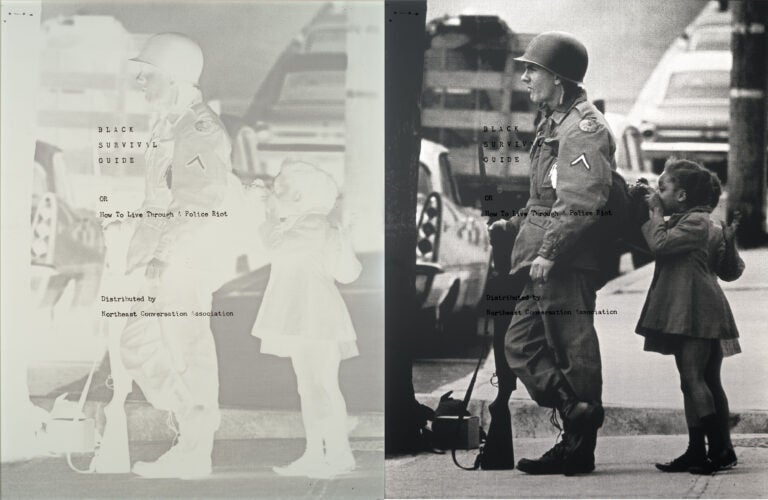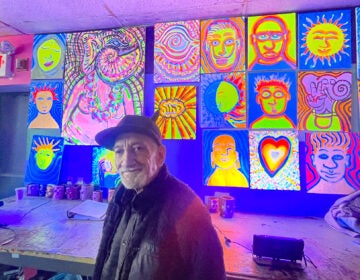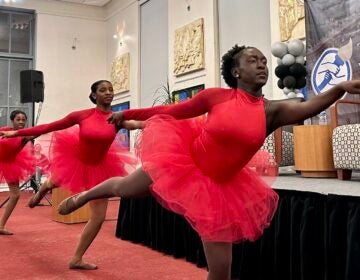Delaware Art Museum revives ‘Black Survival Guide’ exhibit
Originally commissioned to mark the 50th anniversary of the National Guard occupation of Wilmington, the exhibit has new relevance in 2020.

Image from "Black Survival Guide, or How to Live Through a Police Riot" (Courtesy of the Delaware Museum of Art)
The Delaware Art Museum commissioned New York artist Hank Willis Thomas to create a new work on the 50th anniversary of the assassination of Dr. Martin Luther King Jr. in 2018. The result was a series of photo screen prints entitled, “Black Survival Guide, or How to Live Through a Police Riot.”
That title comes from a guidebook written for residents of Wilmington. The pamphlet was produced by and distributed to Black residents while Wilmington was occupied by National Guard troops for nine months after King was killed. It was the longest occupation of an American city since the Civil War.
In the exhibit, words from the pamphlet are superimposed over photographs of the occupation. The images are printed on reflective material that reveals the writing when viewers shine a light on the print.
The museum purchased the exhibit to add to its collection after its initial run ended in 2018. Now, after the deaths of Ahmaud Arbery, Breonna Taylor, George Floyd, and others have led to protests and clashes with police, the exhibit has taken on renewed relevance. It’s back on display through Sept. 27.
“So many individuals in the community remembered that powerful exhibition back in 2018 and were actually mentioning it through social media posts, remembering these powerful images, remembering the strong juxtaposition between these images and the text,” said Margaret Winslow, the museum’s curator of contemporary art. “With the museum wanting to continue the work we do to address critical social issues that are affecting our communities, we thought the timing was really quite good to put Hank Willis Thomas’s entire project back on view for our museum public.”
“History books can only capture but so much, a single photograph can only capture but so much,” Thomas said when the exhibit was first unveiled in 2018. “But to read a document like this, you almost have to put yourself in the mind frame of the people that made it. Meaning, the sense of urgency that it was made of.”
Advice from the guidebook that’s printed over of the photos included steps to protect children from being harmed during the occupation. Some of it even came from guidance to residents for how to prepare for an attack from the Soviet Union.
“It was also informed by Cold War-era nuclear fallout pamphlets,” Winslow said. “Some of that language is taken verbatim from those nuclear planning documents and put into this document for how to navigate your own city during an occupation.”
Reviving the exhibit is in line with the museum’s ongoing effort to improve the diversity of its collection. Last year, the museum unveiled plans to add more works by both artists of color and women.

Get daily updates from WHYY News!
WHYY is your source for fact-based, in-depth journalism and information. As a nonprofit organization, we rely on financial support from readers like you. Please give today.






